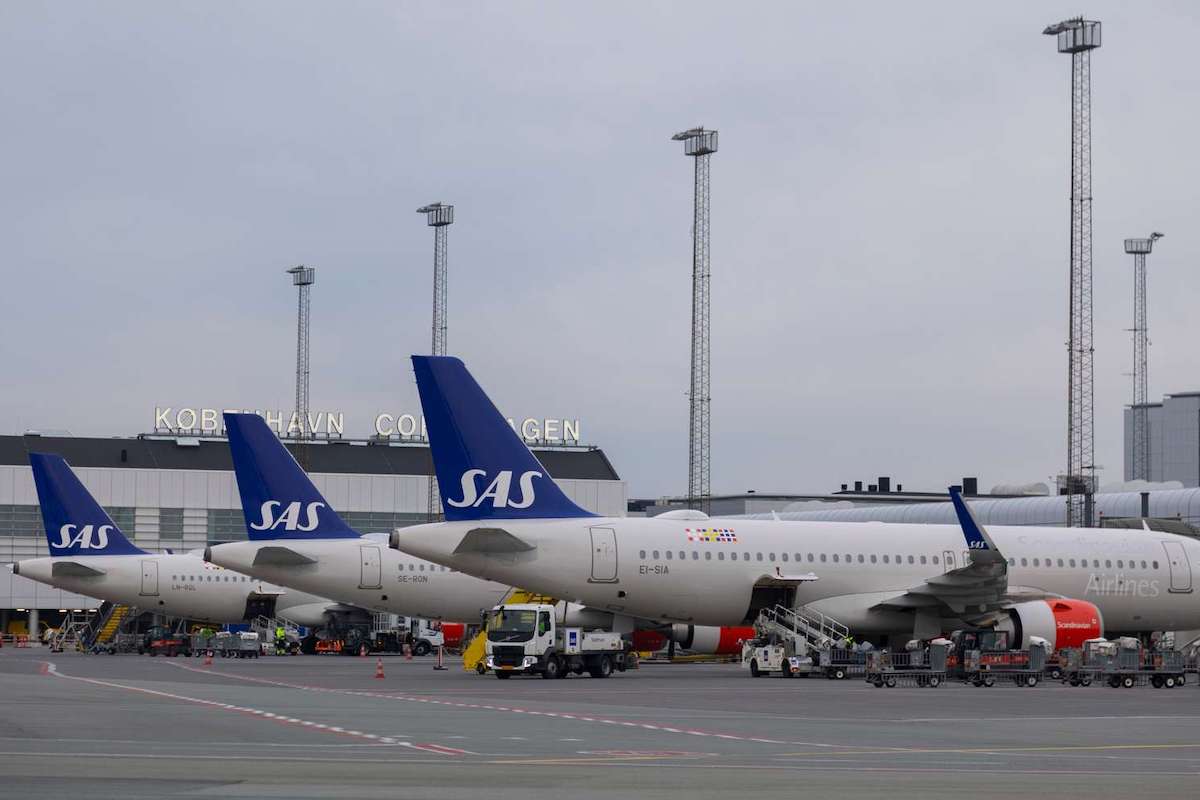SAS Threatens Administration Unless It Gets a Deal on Cost Savings

Photo Credit: Copenhagen Airport
SAS CEO Anko Van der Werff has threatened to take the airline through a court-led restructuring process after little progress was made on the strategic plan it unveiled earlier this year.
"If people are still aiming for or expecting that there will be a magical solution to the challenges that we're faced with, I think they are wrong," he said during the airline's April-quarter earnings call on May 31. He added that if SAS is unable to "find the right outcome for us to be competitive" then "we may be forced to go in court.”
By that, van der Werff referred to the European equivalent of bankruptcy restructuring.
Van der Werff repeatedly cited aircraft lessors when asked about the lack of progress on SAS Forward. The airline is seeking to negotiate both more attractive lease terms and alter the composition of its fleet, particularly of widebody aircraft, he said. SAS wants to shrink and simplify its fleet of twin-aisle planes, which today includes 14 Airbus A330 and A350s, in recognition of continued travel restrictions to Asia and the likely long-term closure of Russian airspace. The airline also wants to accelerate the renewal of its narrowbody fleet, which includes completing the replacement of its 12 remaining Boeing 737s with new Airbus A320neo-family aircraft.
SAS Forward is a 7.5 billion Swedish kroner ($768 million), five-year savings program that, according to van der Werff, is needed to make the airline "competitive." The plan breaks down into five areas: 2.3 billion Swedish kroner from operations and planning, 1.8 billion Swedish kroner from fleet, 1.2 billion Swedish kroner from airports, 1.1 billion Swedish kroner from administration and distribution, and 1.1 billion Swedish kroner from other areas.
SAS Chief Financial Officer Erno Hilden said the airline had made "limited progress" on the entire program.
SAS, which struggled financially even before the pandemic, faces stiff competition in its home markets. Its largest competitor, Norwegian Air, emerged from its own court-led restructuring a smaller, nimbler airline that is rapidly building back its medium- and short-haul network in the Nordic countries and to Europe. Startups Flyr and Norse Atlantic Airways are challenging SAS in Norway. And competitors Eurowings, Finnair, and Ryanair used the crisis to expand their presence in Stockholm, a stronghold for SAS. "We have to be fully competitive in order to stay relevant," van der Werff said.
But the need to become a competitive airline runs deeper than just fending off other airlines. SAS needs to raise at least 9.5 billion Swedish kroner in capital in order to maintain "sufficient liquidity," Hilden said. And it needs improve cost structure in order to raise those funds — hence SAS Forward — which the airline intends to do by issuing new equity, he continued. SAS also hopes to convert 20 billion Swedish kroner in debt to equity.
SAS looks forward to a strong summer. Van der Werff said booking trends are "encouraging" with the airline expecting passenger numbers at roughly 80 percent of three years ago this summer even with most of its Asia network still suspended. SAS will fly more to southern Europe this summer than it ever has before, he said. The carrier has positioned itself to capture a larger share of these leisure travel flows with these additional flights, as well as a new base in Bergen, Norway, operated by its new subsidiary SAS Link.
The cautiously optimistic outlook is tempered by the same concerns that other European airlines have cited. Operations are challenged by staffing everywhere from airports to suppliers and air traffic control organizations. Fuel prices are elevated due to high oil prices. The war in Ukraine continues to add an element of geopolitical uncertainty. And then there is Covid-19, which may have a few new variants to show yet.
SAS revenues jumped 265 percent year-over-year to 7 billion Swedish kroner during the three months ending in April, the second quarter in its 2022 fiscal year. Revenues were down 31 percent compared to 2019. The airline reported a 763 million Swedish kroner operating loss and a 1.5 billion Swedish kroner net loss. Unit revenues were up 10 percent year-over-three-years and unit costs excluding fuel up 12 percent.
The airline did not provide future guidance, citing macroeconomic uncertainty.
